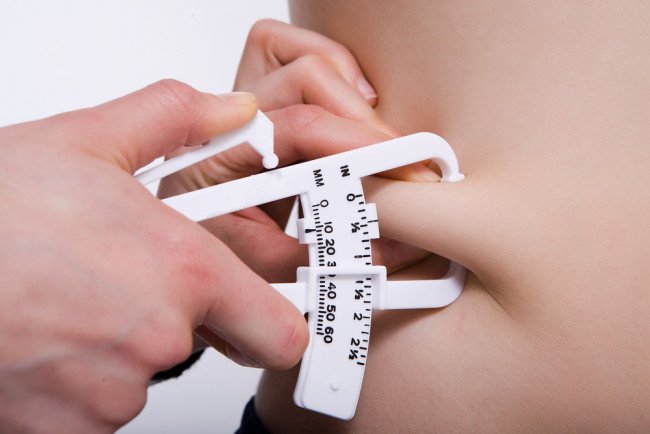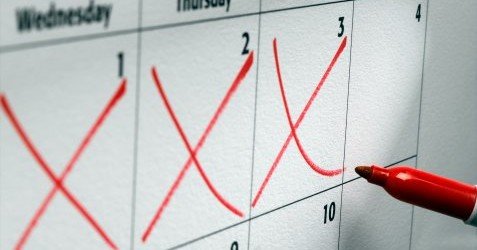Everyone runs into it, right? You hit a fat loss plateau, can’t lose any more fat, can’t lose any more weight on the scale, your body’s not changing. What’s wrong? What do I have to do? Why is this happening to me?
It happens to everyone. The body is not a linear thing. You can’t just keep losing weight consistently every single day, every single week, every single month and get to your goal. It’s not how it works. It’s more like a forward, back, up, down, up, down, up, down. As long as the trend is going in the right direction, like I tell people all the time, you’re on the right track.
When you hit a diet plateau, it’s common. Everyone will hit it eventually. What can you do to keep it going?
Check Adherence
The first thing you can do is check your adherence. First you want to check how consistent you actually are with your diet. When I’m coaching people, I look for 90% adherence. It doesn’t have to be 100, but it has to be 90%. That’s enough to tell me that you’re actually doing what you say you’re going to do. You’re following the plan.
When you look back at your diet, are you at 90% of adherence? Out of seven days, that’s six and a half days. Which means out of the whole week you’re going to be missing maybe two meals. Two meals are going to be off your diet. If you’re not at this level of adherence yet, if you’re nowhere even close, that’s the first thing you should do before you look to remove calories, add any cardio, or add more training days.
Being consistent with what you actually have to do, actually following the plan, is the first thing that you have to check. Look back, be honest with yourself. Are you 90% adhering with your diet? If not, then great, you can go back and work on that for another week, and then see where you’re at, but if you are, then great. You can move on to the next step, but first step, check adherence.
Add Training or Remove Food
Second step, you can remove calories or add cardio or High Intensity Interval Training or another training day. If you’ve checked your adherence and you’re 90% good, then maybe you just need to make a small adjustment in the right direction. Maybe you just need to remove a little bit more calories, or add a little bit of HIIT training to your regimen, or maybe you add another day. Look for where you can add or subtract something that’s the easiest.
If you’re already training seven days a week, for you to say, “I’m not losing fat anymore, let me just add a second workout on the seventh day,” is a lot less likely for consistency than for you to remove 50 calories if you’re eating 2,500 calories. You’re going to look for where you have the most wiggle room in terms of easiness of making a change and what is going to be most consistent over time, because remember, you’re going to eventually hit another fat loss plateau.
It’s inevitable. It happens every time, but you don’t want to be able to make this change, get to the next one, and have nowhere to go. You always want to leave somewhere to go. Check adherence, then either add a little bit of training or remove a little bit of food and see where that goes.
Add Recovery In the Form Of Rest Days or Extra Food
Method number three is to take a break. Everyone thinks that fat loss or training is go, go, go. Add, add, add, add, add. Keep adding stress, keep adding training, keep removing food, go, go, go. Forward, forward, forward, when in fact the body doesn’t work that way. Your body doesn’t respond well when it’s under a high amount of stress.
If you’re over-training, or training way too much for the amount of recovery that you’re supplying in terms of sleep and food, your body’s actually going to regress. We’ve had that happen a lot at the gym where people were losing fat but the training volume really amplified, and we didn’t supply them with enough food or enough rest. You’d think because they were training harder and longer that they would lose more fat, but it actually went backwards. They gained a little bit of weight, they gained a little bit of fat, lost a little bit of muscle.
It’s because your body’s first priority is to recover. Its first priority is not to lose fat and give you a six pack. Its first priority is survival. It’s going to divert all its energy to recovery, and if there’s nothing left for you to metabolize things and lose fat, then you won’t. You’ll actually go backwards. In this case, or in these cases, it was not enough nutrients or not enough recovery to do both.
You have to look at your training, look at your diet and give an honest opinion of maybe you’re training too much, or maybe you’re eating too little at this time. In these situations you need to take a rest day to allow your body to recover and allow its metabolism to come back up. Allow the processes to start back up, and that way you’ll continue losing fat. It’s like taking a step back in order to take two steps forward.
Same thing with your diet. If you’re constantly under-eating, the training volume hasn’t increased but you’ve been steadily decreasing your food and it’s been getting you to lose weight, and then all of a sudden you are not losing weight anymore. Maybe you’re even getting a little puffier! This may be a time for you to introduce what’s called a refeed day, or an overfeed day, which is not to be confused with a cheat day, but it’s a day where you eat a lot of calories. Way more. Closer to 1.5 to 2 times what you usually eat on your diet, just to give your metabolism a boost.
It gives your body a signal that there’s an abundance of food coming in so you can recover. Your hormones will get readjusted back to a better point for you to start losing weight. Your metabolism goes back up and then you get back on your diet. You’ve had some recovery and now you can continue to lose fat. It’s not always about forward, forward, forward. Sometimes you have to take a step back, but as long as the trend is going in the right direction, overall you’re going to be progressing.



